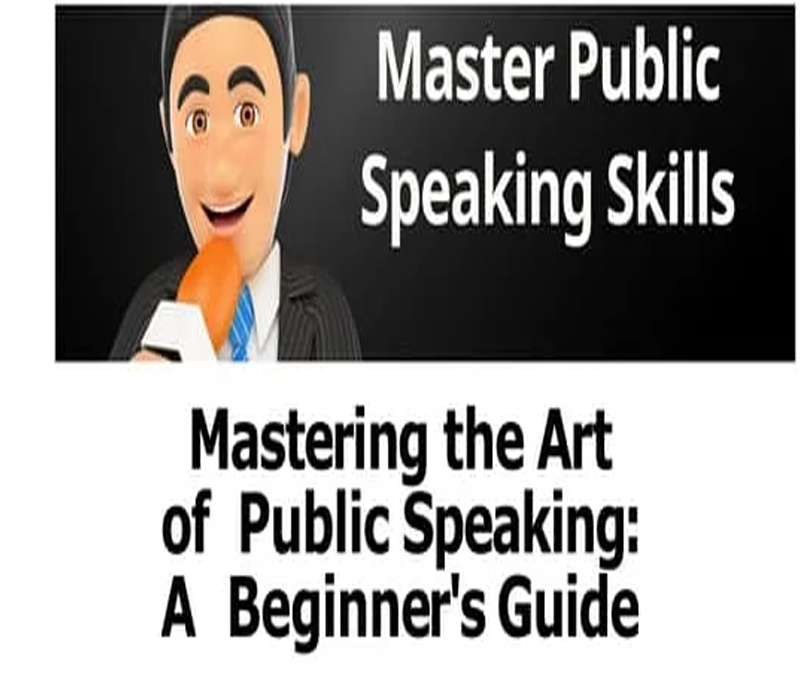Public speaking is an ability that can unlock various opportunities in both your personal and professional life. However, it can also be a daunting task for many. This guide is designed to help beginners master the art of public speaking by providing clear and actionable tips. By the end of this article, you will have a solid foundation to build your confidence and improve your public speaking abilities.

Understanding the Basics of Public Speaking
1. The Significance of Public Speaking
Guide Public speaking is an essential skill in various aspects of life, including career advancement, education, and social interactions. It allows you to effectively communicate your ideas, persuade others, and make a lasting impression.
2. Common Challenges Faced by Beginners
Many beginners face challenges such as anxiety, lack of confidence, and difficulty in organizing their thoughts. Understanding these challenges is the first step towards overcoming them.
Preparing for Your Speech
1. Researching Your Topic
Thorough research is crucial for delivering a knowledgeable and engaging speech. Ensure you understand your topic well and can answer any potential questions from the audience.
2. Structuring Your Speech
A well-structured speech helps in maintaining a logical flow and keeping the audience engagedA speech typically includes an introduction, body, and conclusion.
3. Introduction
The introduction should grab the audience’s attention and provide a brief overview of what the speech will cover.
4. Body
The body should contain the main points, supported by evidence and examples. Each point should be clearly defined and easy to follow.
5. Conclusion
The conclusion should summarize the key points and leave the audience with a memorable message or call to action.
6. Practicing Your Speech
Practice is key to gaining confidence and improving your delivery. Practice your speech several times, ideally in front of a mirror or with a reliable friend or mentor.
Developing Effective Delivery Skills
1. Managing Public Speaking Anxiety
Public speaking anxiety is common but manageable. Techniques such as deep breathing, visualization, and positive self-talk can help reduce anxiety.
2. Using Body Language
Body language plays a crucial role in effective communication. Maintain eye contact, use gestures to emphasize points, and ensure your posture is open and confident.
3. Voice Modulation and Clarity
Your voice should be clear and audible to everyone in the room. Practice varying your pitch, tone, and pace to keep the audience engaged.
Engaging Your Audience
1. Understanding Your Audience
Knowing your audience helps tailor your speech to their interests and expectations. Consider factors such as age, background, and level of knowledge about the topic.
2. Using Visual Aids
Visual aids, such as slides, charts, and videos, can enhance your speech and make complex information easier to understand. Ensure they are relevant and not overly distracting.
3. Encouraging Interaction
Engaging your audience through questions, discussions, or activities can make your speech more interactive and memorable. Be open to feedback and adapt as needed.
Handling Q&A Sessions
1. Preparing for Questions
Anticipate possible questions and prepare your answers in advanceThis demonstrates that you are informed and well-prepared.
2. Responding to Questions
Listen carefully to each question, and take a moment to think before responding. If you don’t know the answer, it’s okay to admit it and offer to follow up later.
Continuous Improvement
1. Seeking Feedback
Constructive feedback from your audience or peers can provide valuable insights into areas of improvement. Be open to criticism and use it to refine your skills.
2. Recording and Reviewing Your Speeches
Recording your speeches allows you to review your performance and identify strengths and weaknesses. Pay attention to aspects such as clarity, body language, and audience engagement.
3. Joining Public Speaking Groups
Consider joining public speaking groups, such as Toastmasters, to practice regularly and learn from others. These groups provide a supportive environment to develop your skills.
Conclusion, Mastering the art of public speaking Guide is a journey that requires preparation, practice, and continuous improvement. By understanding the basics, preparing effectively, developing strong delivery skills, engaging your audience, and seeking feedback, you can become a confident and effective public speaker. Remember, even the most accomplished speakers started as beginners. With dedication and persistence, you too can master the art of public speaki Guide.






